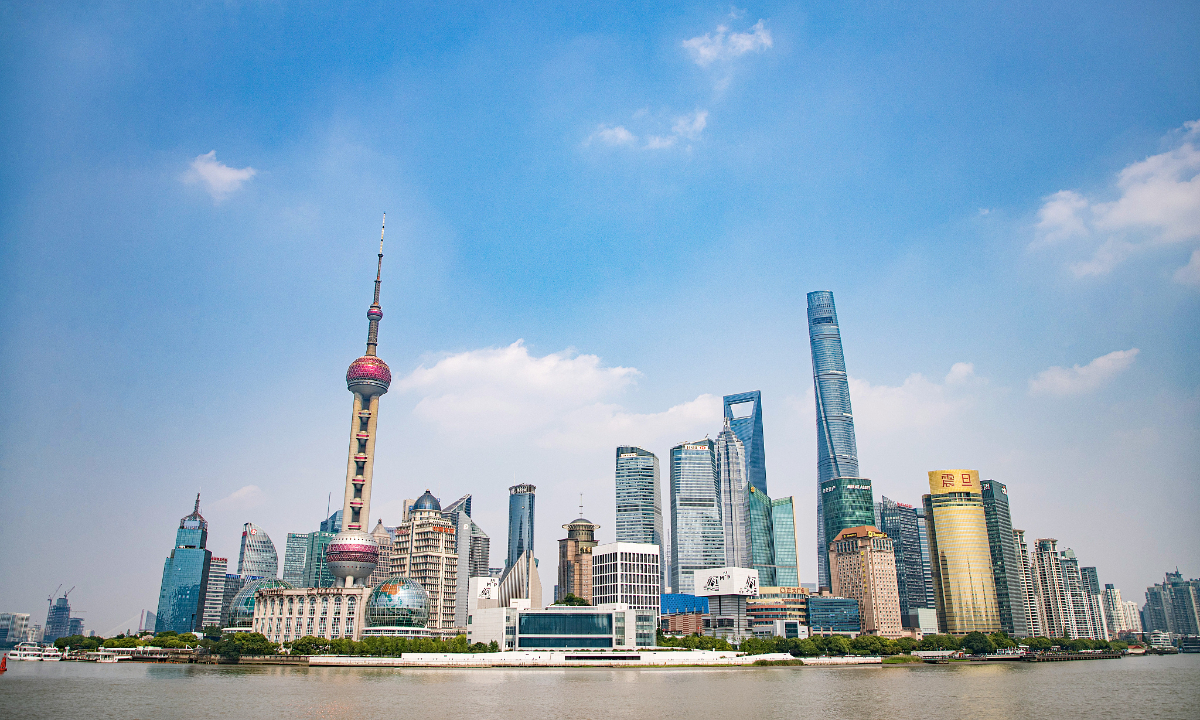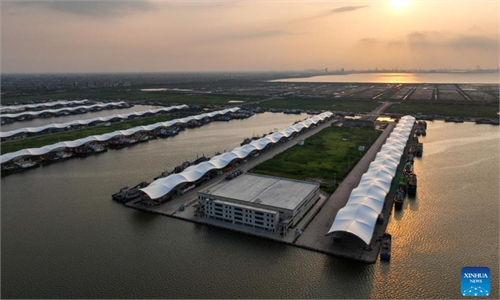Chinese leadership reiterates calls for high-quality development of Yangtze River Economic Belt, underlines role of technological innovation
Opening-up, technological innovation highlighted in region’s blueprint

Shanghai Photo:VCG
The Chinese leadership on Monday called for efforts to further promote the high-quality development of the Yangtze River Economic Belt, stressing the role of scientific and technological innovation in driving development, and reiterated the fostering of better connections between the domestic and international markets as part of the country's "dual circulation" strategy.
The remarks, coming against the backdrop of a prolonged US technology blockade, has left no doubt about the nation's renewed focus of pushing forward tech prowess, observers said, noting that the remarks also sent a strong signal of China's commitment of further opening-up amid rising protectionism globally.
The Political Bureau of the Communist Party of China (CPC) Central Committee on Monday held a meeting to review guidelines on policies and measures for further promoting the high-quality development of the Yangtze River Economic Belt, according to a report from the Xinhua News Agency on Monday.
Xi Jinping, general secretary of the CPC Central Committee, chaired the meeting.
The meeting noted that the Yangtze River Economic Belt development strategy is a major strategic decision made by the CPC Central Committee. Advancing the high-quality development of the Yangtze River Economic Belt relies fundamentally on the sound ecology of the Yangtze River basin.
Underlining the role of scientific and technological innovation in promoting the high-quality development of the Yangtze River Economic Belt, the meeting also called for efforts to coordinate the layout and transfer of industries along the Yangtze River.
The level of regional transport integration needs to be raised, the security and stability of key national industry and supply chains should be maintained, and disaster prevention and mitigation capacity in the river basin needs to be improved, the meeting said.
The meeting also pledged policy support for the area with a number of major reforms in key areas.
The development strategy targeting the Yangtze River Economic Belt is a major regional development strategy that focuses on cross-regional synergistic development, Cong Yi, a professor at the Tianjin University of Finance and Economics, told the Global Times on Monday, stressing that the protection of the ecology and environment is a prerequisite for the future progress of the region.
The regional development of the Yangtze River Economic Belt will contribute significantly to the nation's overall development, and the regional development patterns - especially in key sectors such as innovation and high-quality opening-up while sticking to green development - will have a demonstration effect for other regions, said Cong.
The Yangtze River Economic Belt covers nine provinces and two municipalities including Shanghai and East China's Jiangsu Province, accounting for more than 40 percent of the country's population and economic aggregate. The economic aggregate of the Yangtze River Economic Belt increased from 42.3 percent in 2015 to 46.5 percent in 2019 and further to 46.6 percent in the first three quarters of 2020, according to Xinhua.
Cong noted that the Yangtze River Delta region, centered on and around Shanghai, plays a vital role in the development of the economic belt, which is also a highland for the nation's development in innovation and opening-up. For instance, China's first pilot free trade zone, the China (Shanghai) Pilot Free Trade Zone, was officially launched in Shanghai in September 2013.
Although the international landscape has ever been changing, China has always stuck to promoting high-quality opening-up, while Shanghai should take the initiative to explore its openness in various aspects by utilizing the country's super-large market advantage to attract high-quality resources worldwide, Cong said.
The meeting came shortly after President Xi chaired a symposium on advancing the development of the Yangtze River Economic Belt and delivered an important speech in Nanchang, East China's Jiangxi Province on October 12.
At that time, Xi also stressed the need to turn the advantages of the economic belt in sci-tech research and talent into advantages in development. Xi said continued efforts should be made to strengthen the core competitiveness of the manufacturing sector, develop advanced manufacturing, enhance coordination along industry chains, promote the extension of industry chains for competitive industries, and cultivate emerging industries.
This is another important explanation for comprehensively and profoundly improving scientific and technological innovation by the Chinese central government, Ma Jihua, a veteran industry analyst, told the Global Times on Monday.
Chinese experts said that the tough situation that China faces in the tech field calls for strategic guidance, as it requires practical joint measures led by the central government, local authorities and the participation of enterprises, including follow-up policy support and the cultivation of talent.
Under the blueprint, the Shanghai-centered Yangtze River Economic Belt, together with the Guangdong-centered Pearl River Delta, will play a major role in pushing the nation's tech prowess amid headwinds, Ma said.


